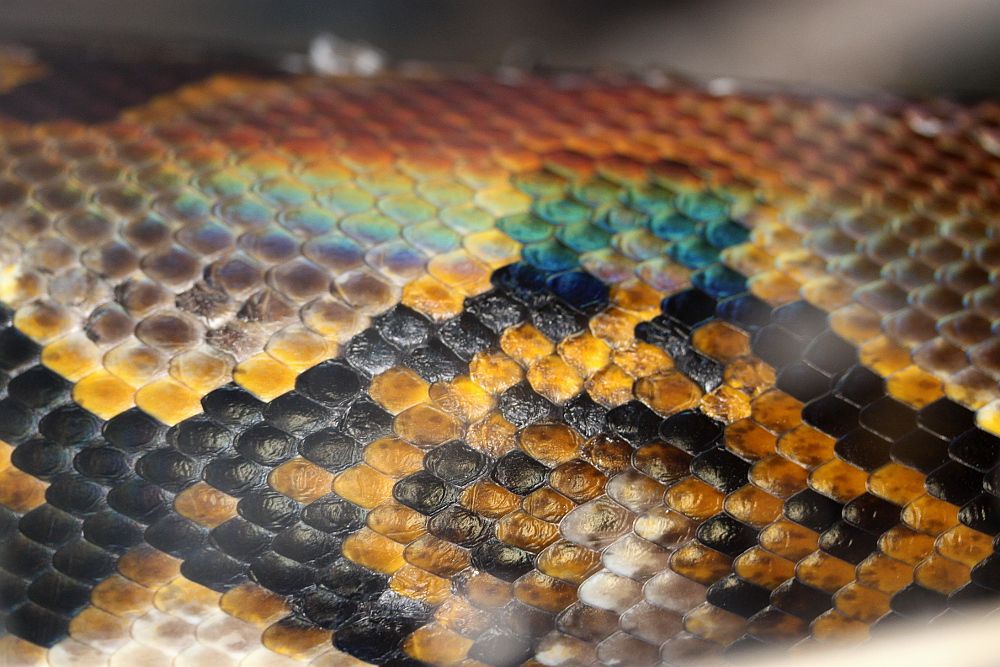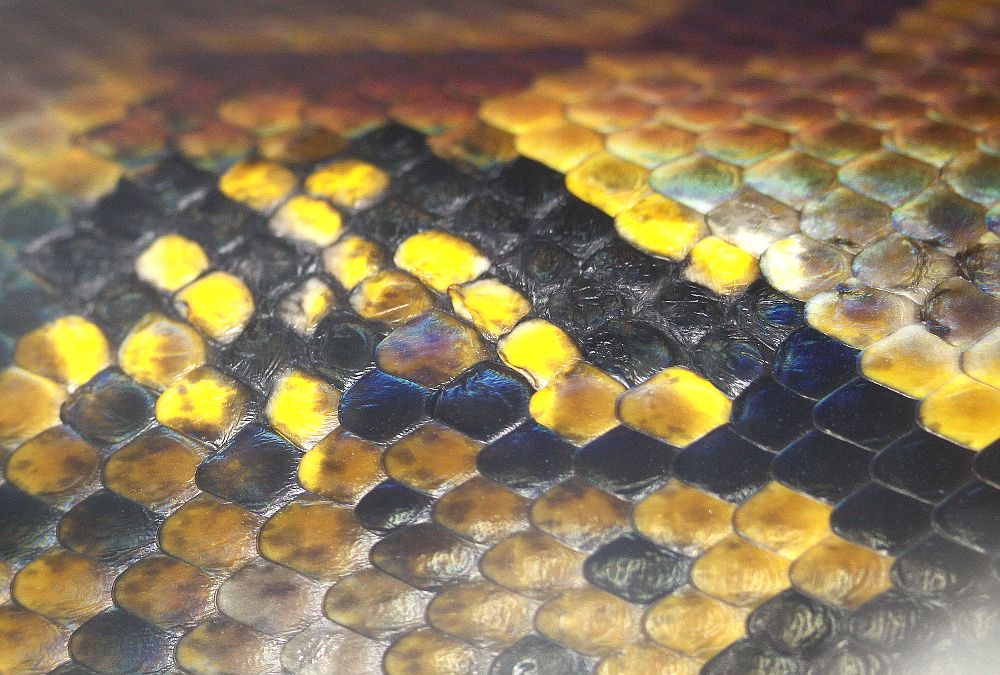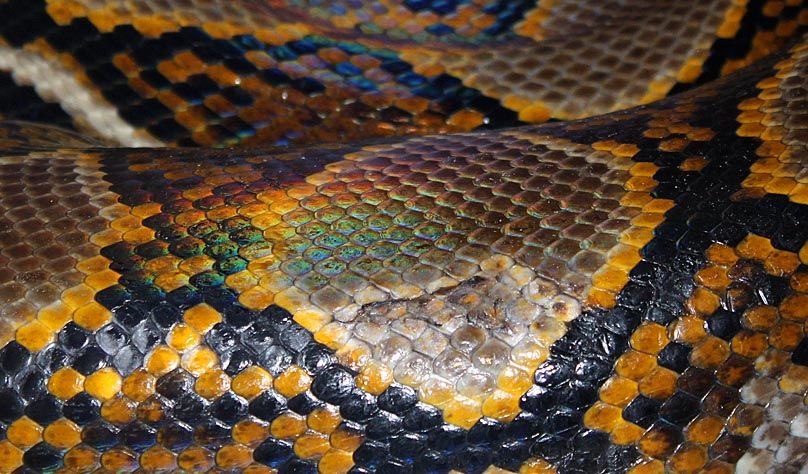|
|  |
| Notices |
Welcome to the sSnakeSs community. You are currently viewing our boards as a guest which gives you limited access to view most discussions and access our other features. By joining our free community you will have access to post topics, communicate privately with other members (PM), respond to polls, upload content and access many other special features. Registration is fast, simple and absolutely free so please, join our community today! If you have any problems with the registration process or your account login, please contact contact us.
|
 10-27-14, 04:28 PM
10-27-14, 04:28 PM
|
#16
|
|
Member
Join Date: Sep-2014
Location: Cottonwood, AZ
Posts: 155
Country: 
|
Re: Healthy scales?
No problem, and thank you so much for the input. First ball python so it is very reassuring to have more experienced keepers to compare notes with. I suppose since I was working all day it is entirely possible that a blister came up right before, though the humidity if anything has been on the low side. Not sure if that would make a difference. It hovers between 50 - 60% with misting but the highest I have seen it is 65% immediately after misting the enclosure. From what I have read, scale rot typically affects the belly scales, at least primarily. His belly is perfect, is it likely to be scale rot with only that one area affected?
No worries about the time change, it is actually sort of nice, as most of the time I am online around 2-3 am my time, so the time difference means people are actually awake various places when I am on lol.
__________________
1.0 Pastel Ball Python, 1.0 Tremper Leopard Gecko,
0.0.1 Tiger Salamander, 0.1 Chinchilla, 2.0 Cats, 0.1 Chilean Rose Tarantula
|

|
|
 10-27-14, 04:40 PM
10-27-14, 04:40 PM
|
#17
|
|
Forum Moderator
Join Date: Nov-2002
Location: Toronto
Age: 39
Posts: 16,977
|
Re: Healthy scales?
If you handle the snake regularly you wouldn't have missed any blisters. Heat or water blisters.
Along with scale rot, blisters, take awhile to develop in snakes. It takes awhile in some pretty unhealthy conditions to get there. However, I am not a vet and I am not looking at everything in person.
I am unsure of the cause of issue so I would use the other users advice and keep an eye on it. It looks like just missing scales at this time. You don't apply any topical lotions or ointments correct?
As for your shedding issue. It's a simple fix. Barring any health issues I would dump a full water dishs worth of water into the enclosure when you notice the eyes going blue. Re-fill the bowl and leave it be. You should have a full shed.
I do this with all mine. I don't have an absorbant substrate as I use newspaper so they sit in a damp setting for a few days and none have ever developed scale rot or water blisters. In fact I had a baby spend the better part of two weeks in his water dish with no ill effects.
On mites, you generally have to bring them into your collection. Either through a snake you purchase who already has them or somehow they catching a ride on you after handling a snake with them or someone else doing the same. The latter is much more rare than the former.
|

|
|
 10-28-14, 04:26 AM
10-28-14, 04:26 AM
|
#18
|
|
Member
Join Date: Sep-2014
Location: Cottonwood, AZ
Posts: 155
Country: 
|
Re: Healthy scales?
I don't use any lotions or anything on him. I wear lotion frequently, but always wash my hands before handing and don't put anything on until he is back in his tank. I will definitely continue to keep a close eye on him and make sure it doesn't worsen.
As for increasing the humidity prior to shed, is dumping the water bowl to up humidity alright if I am using aspen as substrate? Would mold be an issue or is that also something that would take longer periods of high moisture to develop? I have seen people recommend soaking them when they show early signs of shedding, but I have also seen people recommend against this, as it can remove natural oils and result in drier skin. He is probably due to shed again soon and I would love it if we could get a complete shed this time. I increased the humidity to around 70 last time, but apparently that was still too low.
I am glad to hear that mites would have to come in from an outside source. No other snakes around so we should be safe there. My only concern would be that I sometimes help relocate wild snakes at my work. What precautions could I take to ensure nothing hitches a ride back home with me in the future?
__________________
1.0 Pastel Ball Python, 1.0 Tremper Leopard Gecko,
0.0.1 Tiger Salamander, 0.1 Chinchilla, 2.0 Cats, 0.1 Chilean Rose Tarantula
|

|
|
 10-28-14, 07:47 AM
10-28-14, 07:47 AM
|
#19
|
|
Forum Moderator
Join Date: Jan-2014
Posts: 4,329
Country: 
|
Re: Healthy scales?
T.b.h. i still don't think that they are blister damaged, even though it does remind me of it. The only time i have seen a sudden breakout of blisters a day before shed, was with an animal already being treated for severe blistering. That particular animal had been pro-longly exposed to very wet and unsanitary conditions, nothing like your BP. Anyway since i promised, here are some pictures, the first 2 were taken right after fresh blisters popped during shed, the last picture is of a skin deep blister infection that has almost healed up. As you can see, some of the less damaged scales look similar to what your bp has, but in the overall picture it doesn't look the same.



In case you are wondering, this particular animal survived. The male suffering from the same condition sadly succumbed to sepsis, caused by the deep blistering.
To prevent bringing home mites, if i have been in contact with other reptiles (At an expo for example). I change my clothes and wash up when i get home, before getting anywhere near my own animals. if i have new animals i keep a close eye on them, and have separate supplies for my quarantined animals. Also carefully wash my hands etc between handling my own / quarantined animals. I have not had a mite infestation for 8 years, and i prefer to keep it that way. 
__________________
Aho ni toriau baka!- Baka wa shinanakya naoranai...
|

|
|
 10-28-14, 08:12 AM
10-28-14, 08:12 AM
|
#20
|
|
Forum Moderator
Join Date: Jan-2014
Posts: 4,329
Country: 
|
Re: Healthy scales?
Quote:
Originally Posted by kiiarah

As for increasing the humidity prior to shed, is dumping the water bowl to up humidity alright if I am using aspen as substrate? Would mold be an issue or is that also something that would take longer periods of high moisture to develop? I have seen people recommend soaking them when they show early signs of shedding, but I have also seen people recommend against this, as it can remove natural oils and result in drier skin. He is probably due to shed again soon and I would love it if we could get a complete shed this time. I increased the humidity to around 70 last time, but apparently that was still too low.
|
Humidity and wetness is not the same. Yes one increases the other, but you do not need wetness to achieve high humidity. Not saying what Aaron does is a bad idea, i like to add water to my soil/husk bedding as well when the animal is getting ready to shed. I just rather not make everything wet. Seen too many animals suffering from skin conditions because of it, and i know it is not harmful if the wetness is only maintained during shed. However if the animal isn't 100% or decides to urinate, the skin could easily get irritated. Especially with bedding like aspen which is prone to mold, i would personally not just dump a load of water on it. However, to each their own way. Can't say which is better, only which i prefer.
__________________
Aho ni toriau baka!- Baka wa shinanakya naoranai...
|

|
|
 10-28-14, 08:22 AM
10-28-14, 08:22 AM
|
#21
|
|
Forum Moderator
Join Date: Nov-2002
Location: Toronto
Age: 39
Posts: 16,977
|
Re: Healthy scales?
Quote:
Originally Posted by kiiarah

I don't use any lotions or anything on him. I wear lotion frequently, but always wash my hands before handing and don't put anything on until he is back in his tank. I will definitely continue to keep a close eye on him and make sure it doesn't worsen.
As for increasing the humidity prior to shed, is dumping the water bowl to up humidity alright if I am using aspen as substrate? Would mold be an issue or is that also something that would take longer periods of high moisture to develop? I have seen people recommend soaking them when they show early signs of shedding, but I have also seen people recommend against this, as it can remove natural oils and result in drier skin. He is probably due to shed again soon and I would love it if we could get a complete shed this time. I increased the humidity to around 70 last time, but apparently that was still too low.
I am glad to hear that mites would have to come in from an outside source. No other snakes around so we should be safe there. My only concern would be that I sometimes help relocate wild snakes at my work. What precautions could I take to ensure nothing hitches a ride back home with me in the future?
|
Yes you can dump the water even if you're using aspen. The only thing to my method is that it generally means you need a full enclosure/substrate change right after they shed.
Soaking an animal before a shed doesn't make much sense to me. It increases humidity for the moment and then once the snake is back in it's enclosure it goes back to being in a subpar shedding environment. It's useless.
The humidity needs to be increased within the living/shedding environment.
|

|
|
 10-28-14, 09:01 AM
10-28-14, 09:01 AM
|
#22
|
|
Forum Moderator
Join Date: Jan-2014
Posts: 4,329
Country: 
|
Re: Healthy scales?
Ah yes that makes a lot more sense, completely changing the substrate after the shed. Seems like a lot of hassle with large enclosures though. Soaking doesn't make sense to me either.
__________________
Aho ni toriau baka!- Baka wa shinanakya naoranai...
|

|
|
 Posting Rules
Posting Rules
|
You may not post new threads
You may not post replies
You may not post attachments
You may not edit your posts
HTML code is Off
|
|
|
All times are GMT -6. The time now is 11:21 AM.
Powered by vBulletin®
©2000 - 2024, Jelsoft Enterprises Ltd.

Copyright © 2002-2023, Hobby Solutions.
|
 |



